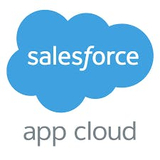Business Process Automation Software
Business process automation (also called BPA) software allows companies to automate a process partially or completely +Show More
| Products | Position | Customer satisfaction | |||
|---|---|---|---|---|---|
|
|
Leader
|
Satisfactory
|
|
||
|
Quickbase offers a no-code platform to assign tasks, automate workflows, and generate insightful reports.
Basis for EvaluationWe made these evaluations based on the following parameters; Customer satisfaction
Average rating
Market presence
Company's number of employees
400-1k employees
Company's social media followers
20k-30k followers
Total funding
$50-100m
# of funding rounds
2
Latest funding date
December 17, 2019
Last funding amount
$50-100m
Company
Type of company
private
Founding year
1999
|
|||||
|
|
Leader
|
Satisfactory
|
|
||
|
Salesforce Platform is the leading low-code development platform that empowers your team to build and extend your Customer 360 with AI, automation, and data. With the Salesforce Platform, you can execute on your Customer 360 vision, securely, and keep your customer at the center of everything you do. Access a harmonized, unified view of your customers, automate manual, inefficient processes to drive productivity, and empower your employees to deliver a seamless, connected customer experience. Accelerate your Salesforce development, increase developer efficiency, and save on IT costs with the Salesforce platform.
Basis for EvaluationWe made these evaluations based on the following parameters; Customer satisfaction
Average rating
Market presence
Number of case studies
10-20 case studies
Company's number of employees
5-10 employees
Company's social media followers
5k-10k followers
Total funding
$50-100m
# of funding rounds
7
Latest funding date
October 18, 2022
Company
Type of company
public
Founding year
1999
|
|||||
|
|
Leader
|
Satisfactory
|
|
||
|
Appian offers a low-code automation platform that helps you efficiently build applications and workflows.
Basis for EvaluationWe made these evaluations based on the following parameters; Customer satisfaction
Average rating
Market presence
Number of case studies
100-200 case studies
Company's number of employees
2k-3k employees
Company's social media followers
100k-1m followers
Total funding
$10-50m
# of funding rounds
2
Latest funding date
March 3, 2014
Last funding amount
$10-50m
Company
Type of company
public
Founding year
1999
|
|||||
|
|
Leader
|
Satisfactory
|
|
||
Basis for EvaluationWe made these evaluations based on the following parameters; Customer satisfaction
Average rating
Market presence
Company's number of employees
20k-30k employees
Company's social media followers
1m-2m followers
Company
Type of company
private
Founding year
1996
|
|||||
|
|
Leader
|
Satisfactory
|
|
||
|
Nintex offers a powerful, easy-to-use, and complete platform that helps companies discover, automate, and optimize business processes to drive growth. The Nintex Process Platform offers intelligent forms, advanced workflow, digital document generation, eSignatures, robotic process automation (RPA), process discovery technology, and a powerful process management solution. With more than 15 years of experience, we are a company of process experts, supporting more than 10,000 customers across the globe every day.
Basis for EvaluationWe made these evaluations based on the following parameters; Customer satisfaction
Average rating
Market presence
Company's number of employees
1k-2k employees
Company's social media followers
50k-100k followers
Company
Type of company
private
Founding year
2006
|
|||||
|
|
Challenger
|
Satisfactory
|
|||
|
ActiveBatch is a software platform for workload automation that enhances and streamlines job scheduling across enterprises:
- Pre-built connectors for tens of common enterprise software such as ERP, ETL, and CRM tools - Low-code Super REST API Adapter connects servers, applications and services . - Manage and automate critical processes from a single pane of glass. - Customizable and proactive monitoring and alerting system to prevent job failures and delays. Each alert is deliverable in a variety of ways including email, SMS, Slack, JMS, Microsoft Message Queues, SNMP, Skype and more Basis for EvaluationWe made these evaluations based on the following parameters; Customer satisfaction
Average rating
Market presence
Number of case studies
1-5 case studies
Company's number of employees
400-1k employees
Company's social media followers
40k-50k followers
Total funding
$250-500m
# of funding rounds
1
Latest funding date
May 11, 2021
Last funding amount
$250-500m
Company
Type of company
private
Founding year
1993
|
|||||
|
|
Challenger
|
Satisfactory
|
|
||
|
iGrafx BPM—Business Process Management and Analysis solutions assist businesses in achieving continuous process improvement
Basis for EvaluationWe made these evaluations based on the following parameters; Customer satisfaction
Average rating
Market presence
Number of case studies
30-40 case studies
Company's number of employees
100-200 employees
Company's social media followers
5k-10k followers
# of funding rounds
1
Latest funding date
June 1, 2021
Company
Type of company
private
Founding year
1991
|
|||||
|
|
Challenger
|
Satisfactory
|
|
||
|
CMW Platform® - a low-code digital transformation suite unleashing the process automation power for building innovative business apps. Platform perfectly fits the business needs on a single department or enterprise level connecting workflows, teams and systems. The Platform provides low-code tools for process mapping, data modeling and forms building, so even non-technical users can start business automation with drag-and-drop simplicity. It allows for visual and flexible design of business processes coupled with configurable web forms and reports, on-the-fly process updates and real-time visibility. CMW Platform is rated #1 BPM Software by Gartner Peer Insights with high customers' satisfaction by tens patented features on process automation integrated into the product. With CMW Platform you can: - Design, automate and modify processes using visualisation, not coding - Create web forms and gather necessary information during process execution - Manage tasks, cases and projects efficiently - Make fact-driven decisions based on flexible reports - Use fully Open API to integrate with Microsoft Outlook, Salesforce, DocuSign, Slack and other software for the most business results - Get guaranteed reliability and flexibility with multi-tier Service Oriented Architecture provided in Coud or On-premise. The Solution provides a complete set of enterprise-ready capabilities for a wide array of industries, including Software Development, Education, Oil&Gas, Manufacturing. CMW Platform also provides pre-built Business Applications for IT, Marketing, Sales, Finance & Administration, HR and other departments. Start your digital transformation with CMW Lab support on every step and significantly reduce time, workload and costs.
Basis for EvaluationWe made these evaluations based on the following parameters; Customer satisfaction
Average rating
Market presence
Company's number of employees
20-30 employees
Company's social media followers
400-1k followers
# of funding rounds
1
Latest funding date
April 28, 2015
Company
Type of company
private
Founding year
2010
|
|||||
|
|
Challenger
|
Low
|
|
||
|
KiSSFLOW is a workflow tool & business process workflow management software to automate your workflow process.
Basis for EvaluationWe made these evaluations based on the following parameters; Customer satisfaction
Average rating
Market presence
Number of case studies
50-100 case studies
Company's number of employees
50-100 employees
Company's social media followers
10k-20k followers
Total funding
$1-5m
# of funding rounds
1
Latest funding date
May 1, 2012
Last funding amount
$1-5m
Company
Type of company
private
Founding year
2012
|
|||||
|
|
Challenger
|
Satisfactory
|
|
||
|
Fluix is a no-code, simple-to-use software solution that helps companies to digitize documents and automate routine tasks, all in one place. We solve the pain points of office and field teams who want to deliver faster and gather secure, reliable data while keeping safety and compliance as top priorities. Fluix customers benefit from lightning-fast deployment, increased productivity, and a world-class Support team that always has your back. Developed from extensive use-case research, Fluix empowers companies around the world to further develop their competitive edge and keep everyone on the same page - without using paper! Fluix is trusted by the world’s leading companies to optimize productivity and ROI in the construction, energy, facilities management, and transportation industries, including Siemens Gamesa, RWE, Centuri, SAS Airlines, Reborn Cabinets, and Comfort Systems USA. Have questions? Contact us at sales@fluix.io +1 650-433-9008 +44 2392 16 2010 https://fluix.io
Basis for EvaluationWe made these evaluations based on the following parameters; Customer satisfaction
Average rating
Market presence
Number of case studies
20-30 case studies
Company's number of employees
50-100 employees
Company's social media followers
2k-3k followers
Company
Type of company
private
Founding year
2014
|
|||||
“-”: AIMultiple team has not yet verified that vendor provides the specified feature. AIMultiple team focuses on feature verification for top 10 vendors.
Sources
AIMultiple uses these data sources for ranking solutions and awarding badges in business process automation software:
Business Process Automation Leaders
According to the weighted combination of 4 metrics





What are business process automation
customer satisfaction leaders?
Taking into account the latest metrics outlined below, these are the current business process automation customer satisfaction leaders:





Which business process automation solution provides the most customer satisfaction?
AIMultiple uses product and service reviews from multiple review platforms in determining customer satisfaction.
While deciding a product's level of customer satisfaction, AIMultiple takes into account its number of reviews, how reviewers rate it and the recency of reviews.
- Number of reviews is important because it is easier to get a small number of high ratings than a high number of them.
- Recency is important as products are always evolving.
- Reviews older than 5 years are not taken into consideration
- older than 12 months have reduced impact in average ratings in line with their date of publishing.
What are business process automation
market leaders?
Taking into account the latest metrics outlined below, these are the current business process automation market leaders:





Which one has collected the most reviews?
AIMultiple uses multiple datapoints in identifying market leaders:
- Product line revenue (when available)
- Number of reviews
- Number of case studies
- Number and experience of employees
- Social media presence and engagement
What are the most mature business process automation software?
Which one has the most employees?





Which business process automation companies have the most employees?
73 employees work for a typical company in this solution category which is 50 more than the number of employees for a typical company in the average solution category.
In most cases, companies need at least 10 employees to serve other businesses with a proven tech product or service. 45 companies with >10 employees are offering business process automation software. Top 3 products are developed by companies with a total of 200k employees. The largest company in this domain is DataScience with more than 100,000 employees. DataScience provides the business process automation solution: Oracle Process Cloud
Insights
What are the most common words describing business process automation software?
This data is collected from customer reviews for all business process automation companies. The most positive word describing business process automation software is “Easy to use” that is used in 8% of the reviews. The most negative one is “Difficult” with which is used in 4% of all the business process automation reviews.
What is the average customer size?
According to customer reviews, most common company size for business process automation customers is 51-1,000 employees. Customers with 51-1,000 employees make up 43% of business process automation customers. For an average Automation solution, customers with 51-1,000 employees make up 22% of total customers.
Customer Evaluation
These scores are the average scores collected from customer reviews for all business process automation software. Business Process Automation Software are most positively evaluated in terms of "Overall" but falls behind in "Likelihood to Recommend".
What are the benefits of Business Process Automation?
The most commonly cited benefits of Business Process Automation are:
- Cost saving
- Improved compliance
- Time saving
- Increased visibility
- Improved data collection
- Improved data quality
- Enhanced collaboration
- Increased security
- Faster responses to customers
- Improved customer experience
- Increased flexibility
Discover all Business Process Automation benefits
Where are business process automation vendors' HQs located?
Trends
What is the level of interest in business process automation software?
This category was searched on average for 278 times per month on search engines in 2024. This number has decreased to 0 in 2025. If we compare with other automation solutions, a typical solution was searched 1.2k times in 2024 and this decreased to 0 in 2025.
Learn more about Business Process Automation Software
Implementation process of BPA software can be categorized as:
- Analysis: Process mining, interviews and other analysis can be carried out to identify high priority processes to automate. Then, automation projects can be identified in line with the company's strategy.
- Solution selection:Depending on business requirements, a suitable BPA can be selected.
- Implementation: While businesses set up their BPA solutions, they also extend their current IT systems with specialized plugins and add-ons, if necessary. At this step, every function should be documented to confirm that software is configured correctly. Companies also introduce administrator training and user-acceptance tests to assess the viability of the solution.
- Integration: Businesses perform API integration to allow new programs to connect and interact with other existing programs. They also implement the enterprise service bus (ESB) in a service-oriented architecture (SOA) for issueless communication between software applications.
- Maintenance and Support: Lastly, the bottlenecks are identified to improve BPA performance. Businesses continuously update their system versions as they are available. They should also take advantage of technical support if any problem occurs.
You can also check our in-depth guide for RPA implementation
Here are three examples of BPA use cases for a better understanding:
- Purchase order processing: BPA tools can help improve accountability, transparency, and enable accurate recording of data that can be accessed by related business managers when necessary. With BPA, this process can prevent delayed PO approvals, impacted productivity, incomplete records, and errors in the PO.
- Hiring and Employee onboarding: BPA ensures seamless transitions from one task to another, keeping relevant workers in the loop and providing transparency to the status of the process. As a result, HR departments can avoid endless paperwork, employee dissatisfaction, and lower productivity. Wayne Metropolitan Community Action Agency indicates that they can reduce hiring approval time by 80% by implementing BPA into their processes.
- Automating workflows: BPA software can keep track of all the operations. It allows to digitization workflows and automates the entire logistical part of a process. When an employee completes a task, the system can automatically notify the next person within the workflow that they have a new task. This makes operations management much simpler and more efficient.
You can find more use cases in our RPA use cases guide.
Although every industry has different BPA needs, BPA has the potential to improve every industry. Examples include retail, manufacturing, banking, telecommunication, transportation, education, and healthcare. Below are some examples of how different industries can benefit from BPA:
- Banking: The banking industry needs to focus on payment management, automating payment and money transfers, integrating ABS and card systems with other electronic banking systems, and managing budgets, along with the implementation of front and back-office operations.
- Trading and manufacturing: This industry allows BPA to automate production processes, CRM, ESB and ERP systems, warehouse and procurement operations, and paper flow management.
- Telecommunication: This industry collaborates with BPA to simplify its office processes, customer care, payment systems, databases, document and workflow management systems, and technical support.
- Healthcare: Healthcare is concerned with quality and risk management. This industry seeks good practices of record management, electronic signatures, and project management.
Most industry analysts, including Forrester highlight the important of automation. Here are the main benefits of implementing BPA software:
- Reduced costs and paperwork
- Decreased manual errors
- Faster and continuous processes
- Standardized processes
- Easier and faster auditing and analysis
- Improved customer satisfaction, which increases business competitiveness
You can read our RPA benefits guide to gain more insights.
Business process automation (BPA) software is the group of tools to execute repetitive activities in businesses where human force can be substituted. Companies apply this solution to cut their costs, increase performance, and streamline processes. Wikipedia states that BPA software can streamline a business for simplicity, achieve digital transformation, increase service quality, improve service delivery, or contain costs. It consists of integrating applications, restructuring labor resources, and using software applications throughout the organization. Robotic process automation (RPA) is an emerging field within BPA which relies on bots that use UI intended for human use to automate repetitive activities. While BPA software typically builds automations that are completely integrated to the software being automated, RPA bots act like humans, using screen scraping and machine vision to manipulate software
Automation can save a lot of money, but you might think of which processes to start with. McKinsey reports that nearly half of all company processes can be automated. First, you should look at the strategic and organizational factors for improvement. Then, look for suitable processes. The main drivers that can indicate the need for automation are listed below:
- High-volume of tasks
- Multiple people required to execute tasks
- Time-sensitive nature
- Significant impact on other processes and systems
- Need for compliance and audit trails. This is an optional benefit of RPA bots, not all processes to be automated may need audit trails.
You can find a detailed version of this list in the related section of our RPA implementation guide.
If the process fits all the factors mentioned above, you should automate that process. For a better understanding, here are some examples:
These best practices can be helpful for your business while implementing your BPA solution:
- Begin with a clear understanding of what tasks are involved, who is responsible, and when what task needs to be carried out.
- Ensure that the goals are clearly identified.
- Measure outcomes using a phased approach. Many companies are disappointed when the results don't materialize overnight.
- Spare enough time for employee training.
- Adopt a long-term expectation to get better results in terms of ROI.
- Use prebuilt solutions where available.
Best practices for automation (e.g. for RPA and BPA) are quite similar, we also recommend you to look at our RPA best practices guide.










